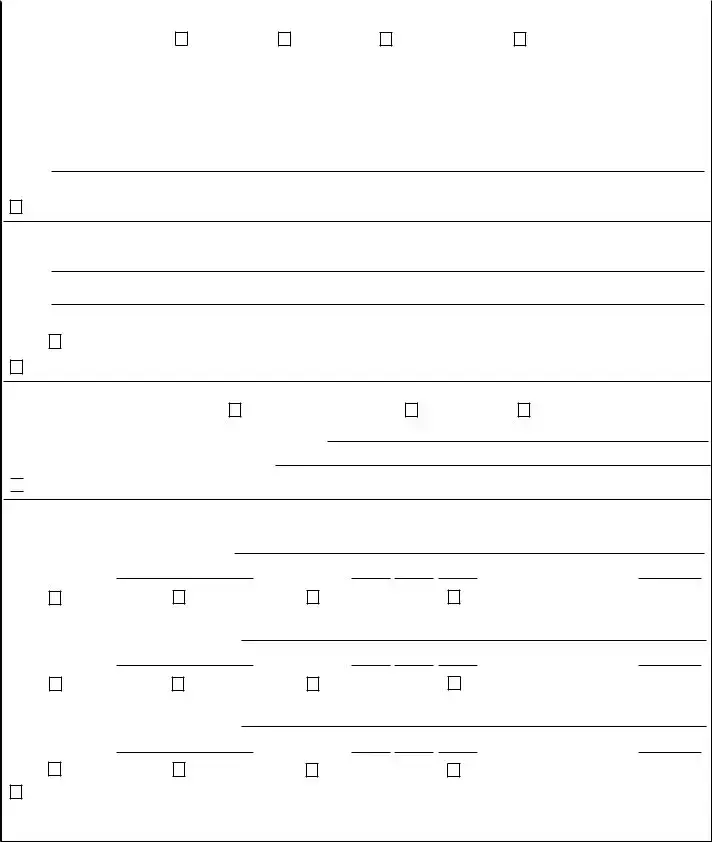The New York Questionnaire form, particularly the Vendor Questionnaire, shares similarities with a variety of other documents essential for business operations, compliance, and due diligence processes. Each of these documents serves its unique purpose but parallels the New York Questionnaire form in gathering detailed information about a business and its operational structure for different objectives.
The Business Registration form is one such document, primarily used when a new business is established or when an existing business starts operations in a new jurisdiction. Like the Vendor Questionnaire, it collects basic information about the business including its name, addresses, type of business entity, and owner information. This similarity lies in ensuring that the business is properly documented for tax and legal purposes, akin to how the Vendor Questionnaire ensures vendors are responsible and fit to conduct business with New York City.
Another akin document is the Contractor Prequalification form used by many government entities and large corporations to pre-screen contractors before they can bid on projects. These forms assess a company's financial stability, experience, and performance history, similar to how the Vendor and Principal Questionnaire segments aim to ensure that vendors are capable of fulfilling contracts with New York City efficiently and responsibly.
The IRS W-9 form, required for tax reporting purposes, is also related in the sense that it collects the taxpayer identification number (TIN), business name, and certification from vendors. This resemblance is seen in the collection of identifying and tax-related information to comply with regulatory requirements.
An Employment Eligibility Verification form (I-9) links with the Vendor Questionnaire through its objective of compliance—where the I-9 ensures eligibility to work in the U.S., the Vendor Questionnaire ensures vendors meet city compliance to do business. Both forms serve as a means to verify the integrity and legal standing of the individuals or entities in question.
The Credit Application form for businesses is designed to evaluate the creditworthiness of a business before extending credit. This evaluation mirrors the responsibility check inherent in the Vendor Questionnaire but focuses on financial stability and credit history to mitigate risk in financial dealings.
The Conflict of Interest Declaration forms, often used in procurement processes, ensure that there are no undisclosed relationships that could unduly influence the outcome of a business transaction. This preventive measure is akin to sections of the Vendor Questionnaire that seek to uncover relationships with public officials or city agencies that could constitute a conflict of interest.
The Foreign Corrupt Practices Act (FCPA) Compliance form, while more specific in its scope, shares the common goal of preventing unethical or illegal business practices. Similar to aspects of the Vendor Questionnaire, it gathers detailed information to ensure companies comply with legal standards and conduct business ethically, specifically in international contexts.
Lastly, the Comprehensive Environmental Response, Compensation, and Liability Act (CERCLA) disclosure forms, although more specialized, similarly require detailed reporting about a company's environmental practices and risks. This parallels the Vendor Questionnaire’s aim of ensuring vendors adhere to laws and regulations, albeit with a focus on environmental responsibility.
In conclusion, while each form serves a distinct purpose within its operational or regulatory context, they all share the common theme of collecting detailed business information. This parallels the intent of the New York Questionnaire form in ensuring that vendors are thoroughly vetted for responsibility, compliance, and capability in their engagements with New York City.

 Printed on paper containing 30%
Printed on paper containing 30% 




 _ Business Corporation
_ Business Corporation
 _
_ 
 _ Sole Proprietorship
_ Sole Proprietorship
 _ Partnership: _
_ Partnership: _
 _ Limited Liability
_ Limited Liability
 _ Limited Liability Company
_ Limited Liability Company
 _
_ 



 No
No  Yes If the
Yes If the 


 Check if attaching additional information
Check if attaching additional information

 Stock
Stock Used
Used  Loan
Loan
 Check if attaching additional information
Check if attaching additional information